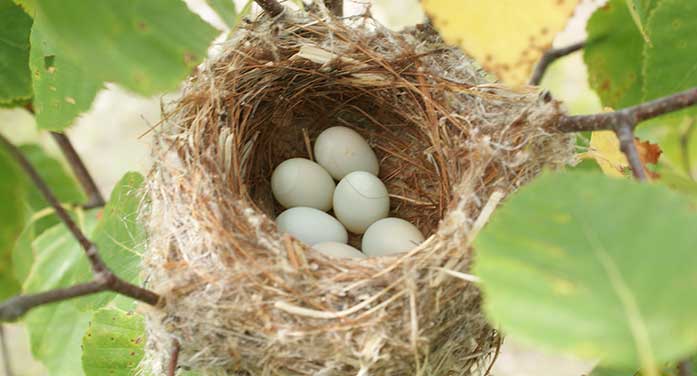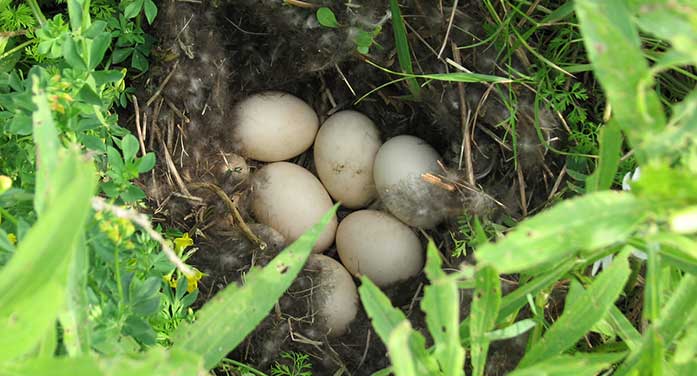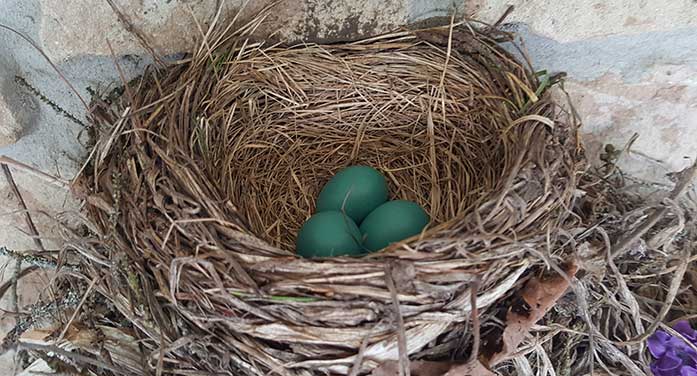 Every spring, I get excited as the birds start to return to Ontario from South and Central America. Life is emerging everywhere.
Every spring, I get excited as the birds start to return to Ontario from South and Central America. Life is emerging everywhere.
Even though nature sometimes seems to conspire against them with cold snaps following sunny days, birds persist. Fire, rain, wind, predators, agricultural and industrial activities, cars, cats and inadvertent human disturbance all work to thwart this important annual breeding cycle.
But they must breed and so they will – if they didn’t breed every year, there obviously wouldn’t be any birds.
Studying the breeding behaviour and successes and failures of nesting species is an important activity. It allows scientists to determine the health of the environment, here and on their wintering grounds.
This is the start of the second year of the third Ontario Breeding Bird Atlas and it will run until 2025. Wait a minute – what’s an atlas? I thought that was a book of maps?
It sort of is but in this context, an atlas is a form of mapping breeding success over a period, following set protocols, where birds are the subject of interest.
This is an incredibly intensive breeding bird survey that will involve thousands of volunteers across Ontario, tens of thousands of volunteer hours and hundreds of thousands of bits of data. The participants will try to find every breeding bird in all of Ontario during this five-year study.

American Goldfinch nest
The province is subdivided into bite-sized chunks – generally 10-by-10-km squares in the south and 100-by-100-km squares in the far north. This ensures that concise coverage can be undertaken and the impacts assessed on a local basis in a microcosm, rather than more broadly across all of Ontario in a generalized manner.
Many organizations – such as Birds Canada, Canadian Wildlife Service (Ontario Region), Ontario Field Ornithologists, Ontario Nature and the Ontario Ministry of Natural Resources and Forestry – will collaborate to bring this project to fruition. Once the project is complete in 2025, a report will be prepared.
This is the third such atlas – the first was undertaken during from 1980 to 1985 and the second from 2001 to 2005. With this type of history, one can realistically compare how our birds are doing over a long period. Is development helping or hindering them? Which species are doing better? Worse? Unchanged? Are there trouble zones we could or should be protecting?
So much can be learned from this citizens’ science project.
Breeding success will be defined in one of three categories: possible, probable or confirmed. Obviously confirmed is preferable, since it shows that a species is definitely breeding in an area. But there’s merit in the other categories as well, particularly for rare and hard-to-find species.

Gadwall nest
One of the risks of this intensive study is that some birds may inadvertently be negatively impacted as zealous birders try to confirm breeding. So please remember that the well-being of the bird is far more important than trying to find a nest.
Smart drone technology helping protect birds from industrial hazards by Bev Betkowski
Researchers, industry partners using automated tools to keep birds safe
Why birds practise their mating songs in winter by Geoff Carpentier
In winter a young bird will practice singing as it tries to mimic its elders
The atlas has mechanisms built in that are non-intrusive when it comes to trying to confirm breeding. If you find a nest, it’s always better to resist the temptation to look into it. Don’t separate the vegetation for a better view, stand too close, be noisy or do anything else that might disturb the breeding birds. Just stand back, watch, listen and observe the behaviour – usually it will reveal what’s happening.
I’m co-leading the Atlas project so if you’d like more information – or, more importantly, want to be a part of the birding team that will do the study – please let me know ([email protected]). No, you don’t have to be an expert birdwatcher; you just have to be aware and ready to learn to assist with this important project.
Even if you just want to submit incidental findings such as a nest on your property, let me know so the data can be recorded and entered into the provincial database. Every bit of data counts.
Geoff Carpentier is a published author, expedition guide and environmental consultant. Visit Geoff on LinkedIn, Instagram and Facebook. For interview requests, click here.
The opinions expressed by our columnists and contributors are theirs alone and do not inherently or expressly reflect the views of our publication.
© Troy Media
Troy Media is an editorial content provider to media outlets and its own hosted community news outlets across Canada.


